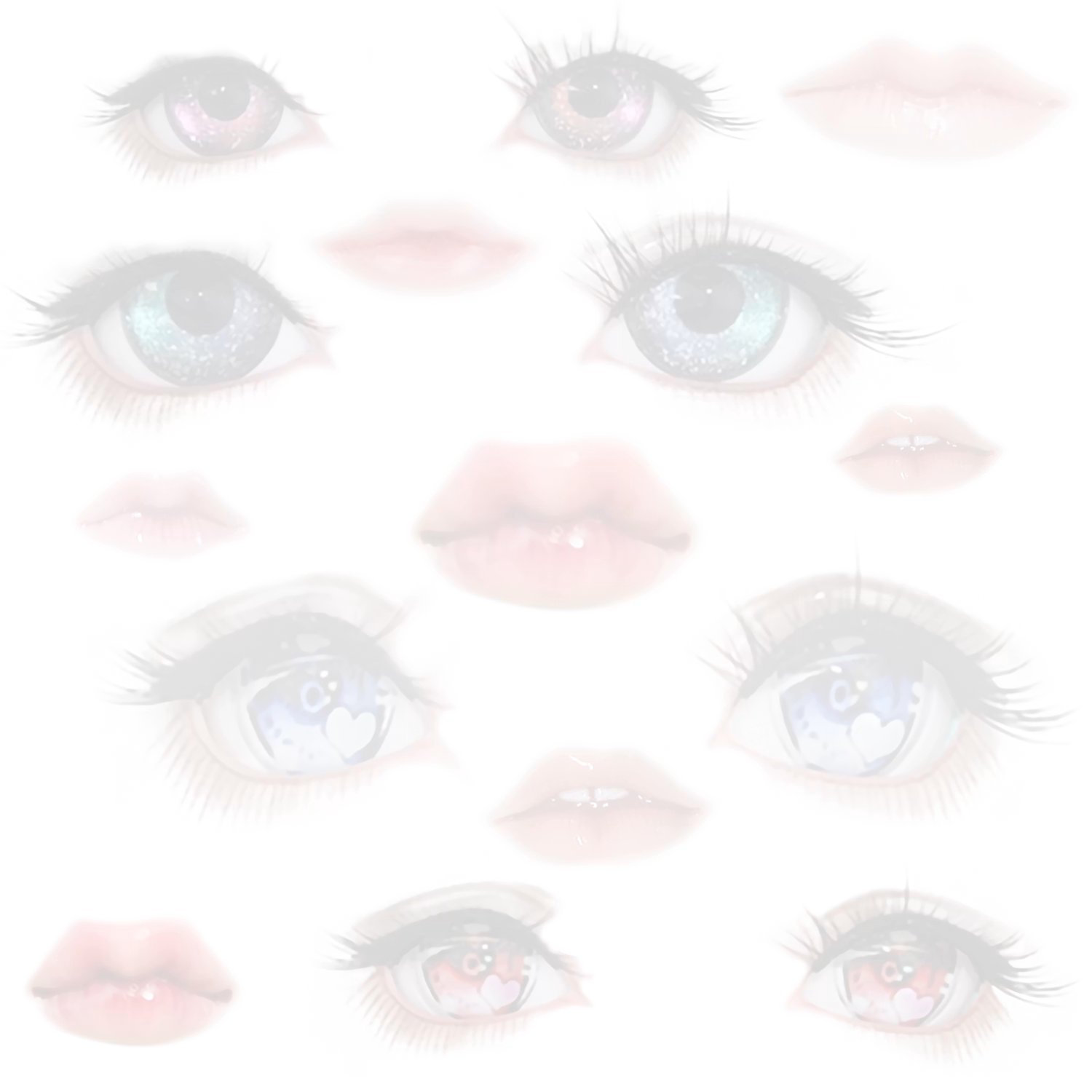
Girlhood, deconstructed: Last year it was Barbie pink. This year it’s Brat green. Join as we untangle the evolution of “girlhood.” (Yes, Simone Rocha sneakers, GIRLS reruns, and Sandy Liang’s pink ribbons included.)
She stares blankly into the camera. Her skin is powdery white, punctuated by pink blush. She’s wearing a poofy, white dress and matching bows in her hair. She looks like a ball-jointed doll, the kind you might find at an antique shop. But she’s not a toy — her name is Bambi Baker, and she's one of many creators pioneering dollcore, a new movement that involves cosplaying as a living doll.
Dollcore involves transforming yourself into a living doll: romantic, dainty outfits, and exaggerated makeup like dramatic lashes, cherry-red lips, heavy blush, and porcelain-powdered skin. It also includes photo editing techniques that use lighting, shading, and perspective to magnify features, making you look even more like a doll. The trend is rapidly spreading across social platforms — on TikTok, there are over 29 million posts with the hashtag #RulesofDollcore.
According to Agus Panzoni, a trend specialist for Depop, dollcore is an evolution of several hyper-feminine “-cores,” collectively referred to as girlcore. First there was cottagecore, which idealized domestic life, handcrafted clothing, and natural makeup. Then there was coquette, exemplified by symbols of traditional femininity — think bows, lace, and pastel makeup (labels like Simone Rocha, Sandy Liang, and Miu Miu are widely regarded as masters of the aesthetic). And we can’t forget Barbiecore, jump-started last year by the release of the blockbuster movie Barbie, typified by all things hot pink.
Dollcore is yet another outgrowth of all of the above — it’s another way for someone to perform femininity, and in turn, negotiate their own relationship to girlhood. But unlike its predecessors, dollcore turns participants into an expressionless object. And it says a lot about the state of “girlhood.”
“Rather than simply emulating a doll, dollcore is a performance or form of cosplay,” says Emily Carmeli, a fashion trend forecaster and teacher at Parsons School of Design. Although the glorification of female dolls is nothing new, dollcore serves a markedly different purpose than Barbiecore did. Embedded in Barbiecore is the way in which Barbie, the movie, challenged viewers to consider the many double standards women are expected to meet — “You have to be thin, but not too thin… You have to have money, but you can't ask for money,” the character Gloria says in her famous monologue. But dollcore doesn’t confront our expectations of femininity in any critical way. It simply encourages participants to don doll-like features and clothing.
Likewise, cottagecore and coquette encourage a similar but notably different endgame as dollcore. Both girl -cores, popularized around 2018 and 2022, respectively, revolved around hyper-feminine fashion and makeup, reinforcing conventional gender stereotypes. Dollcore does the same, but by encouraging participants to look like dolls, it also sends the message that participants should act like dolls, too: submissive, passive, and angelic. Dollcore creators speak quietly or not at all, stare listlessly into the camera, and act like innocent playthings.
Across cultures, dolls are seen as role models — they’re something for girls to imitate, or at least care for like a mother would, ostensibly preparing them for the day they have children. There’s also political and cultural context to consider. Reproductive rights are under attack in America. So is gender-affirming care. “Tradwife” content encouraging women to become homemakers instead of pursuing careers continues to gain steam online. Dollcore seems to mirror these regressions by encouraging participants to embody an idealized femininity — young, thin, and pale with European features — that reinforces outdated, oppressive beauty standards.
Just as we saw Barbie-themed plastic surgeries skyrocket after the Barbie movie debuted, there’s potential for dollcore to translate to behavior that’s more extreme than dressing in doll-like clothing. Some who participate in the dollcore aesthetic take things a step further by also engaging in an activity known as “dolling," which involves the use of BJD kigurumi masks, resin masks that allow wearers to further embody the features of a doll. And on YouTube, dollcore “subliminals” — videos containing positive affirmations that supposedly help viewers to manifest things like “A Living Doll’s Face” and “dolly eyes” — rack up thousands of views.
Jessica DeFino, writer and beauty critic, suspects that dollcore will outlive its fleeting predecessors. While earlier girlcore aesthetics fell out of fashion almost as soon as they infiltrated our For Your Pages, DeFino says dollcore is a trend “that’s proved its staying power,” thanks to the universality of dolls. DeFino adds: “Cottagecore, goblincore, and ‘tomato girl’ all seem to be smaller blips on the trend cycle radar, no match for our enduring obsession with emulating dolls.”
For now, dollcore is still a subculture that’s far from mainstream, but we’re already seeing its aesthetics trickle into luxury fashion. At John Galliano’s Maison Margiela Spring 2024 couture show in January, models were done up to resemble porcelain dolls. They even walked the runway like marionettes, their limbs jolting. Shortly after, Marc Jacobs staged his 40th anniversary runway show in a life-sized “dollhouse” decorated with gigantic tables and chairs.
Following in the footsteps of cottagecore, coquette, and Barbiecore, dollcore is the latest in a long line of rapidly shifting trends to aestheticize femininity. Keeping up with girlcore takes time, money, and energy — each trend requires new makeup and a fresh wardrobe. For some, it's worth it. For others, it begs the question: Will girls ever get a break?